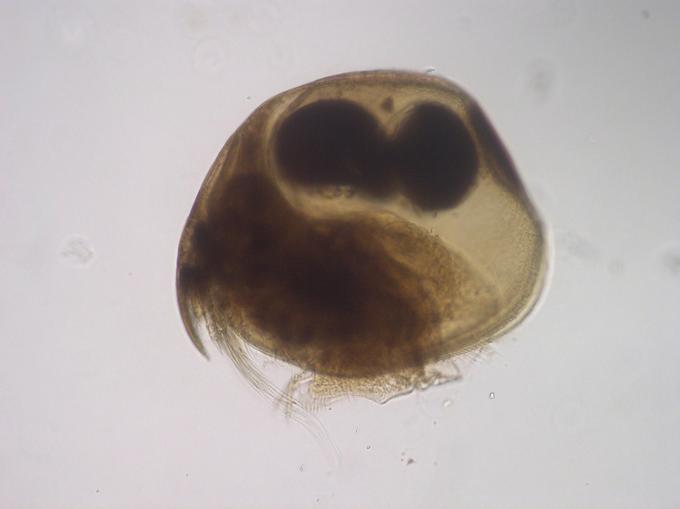
Optical microscopy image of Chydorus sphaericus taken by Alexey Kotov
Russian scientists have discovered that microscopic crustaceans of the genus Chydorus, common in fresh water bodies of southern Australia, arrived there from the Northern Hemisphere. Biologists associated such an amazing expansion of the range with bird migrations and human activities. The discovery forces us to rethink the scale of the "travel" of microscopic animals. The study was supported by a grant from the Russian Science Foundation (RSF) and published in the journal Water.
The ranges of many species of animals and plants on Earth are quite dynamic. At the same time, when developing new territories, living organisms are included in food webs and, since native species may not withstand competition, they are able to modify local ecosystems. For invertebrates, in particular microscopic crustaceans, such an expansion of the range has become common due to the intensity of human economic activity, which unintentionally moves resting eggs over considerable distances.
Scientists from the A. N. Severtsov Institute of Ecology and Evolution of the Russian Academy of Sciences (Moscow), together with colleagues from foreign countries, studied cladocerans of the genus Chydorus and found that all their populations in Australia appeared as a result of a drift from the Northern Hemisphere.
The scientists collected invertebrates from freshwater bodies of Australia with planktonic nets and preemptively identified them to species based on morphological traits such as body shape and size, length, shape and structure of various bristles. In the found representatives of the genus Chydorus, biologists analyzed the sequences of the mitochondrial COI gene. This piece of DNA is sometimes seen as a "barcode" for identifying an animal and assigning it to a particular genus. Based on differences in the sequence of nucleotides in different individuals, biologists have built a phylogenetic tree - a diagram that displays the relation between organisms.
To determine whether these cladocerans were indeed brought to Australia from the Northern Hemisphere, scientists compared the genotypes of southern and northern populations, and also reconstructed the sequence of events in the history of this group. It is unequivocally shown that it originates in the Northern Hemisphere, and all its representatives from southern Australia appeared as a result of a drift through the equator.
“Microscopic crustaceans are dispersed by the transfer of their resting eggs by wind, water currents, and also by waterfowl on their plumage and in the stomach. Recently, more and more cases of changes in their ranges are associated with human activity. This happened to several species of the genus Chydorus, which ended up in another hemisphere in unusual habitats. Such transcontinental transport occurred in two independent ways: by birds during their seasonal migrations and by humans as a result of the accidental transport of eggs when fish were settled in Australia for pond breeding. It is well known that microscopic crustaceans are excellent travelers, their eggs can easily withstand a long journey and retain their viability. However, the scale of this transfer is amazing, because we are talking about the fact that all populations of a very common crustacean in southern Australia turned out to be invaders from the north”, says Alexei Kotov, project manager under the RSF grant, corresponding member of the Russian Academy of Sciences, chief researcher of the A. N. Severtsov IEE RAS.
At the moment, it is not clear how much Australia's ecosystems have suffered from such "invasion". However, the mass introduction of microscopic animals from the Northern Hemisphere to this continent is fraught with serious consequences, which has already been demonstrated for larger animals: rabbits, dingoes, river carp and others. The case described in this paper emphasizes the importance of studying how even the smallest crustaceans affect the ecosystems of continental waters.
